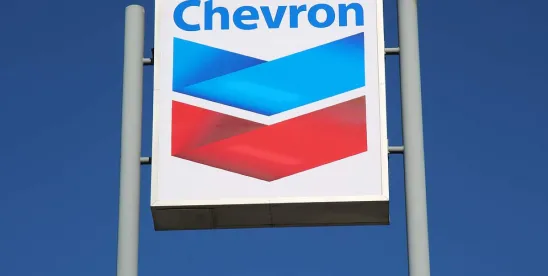When an ambiguity exists in a statute for which Congress has not chosen among the reasonable readings, who decides which possible reading should govern? For nearly four decades, courts have followed the rule of Chevron U.S.A., Inc. v. Natural Resources Defense Council, Inc., 467 U.S. 837 (1984), which held that they should defer to the “permissible” interpretation put forward by the federal agency implementing the statute through regulations.
Last week, in a 6–3 ruling, the Supreme Court decided Loper Bright Enterprises v. Raimondo, 603 U.S. ____ (2024), which overruled Chevron and held that federal courts must always be the final decision-makers on the meaning of statutes. Agency interpretations of their enabling statutes are no longer entitled to special deference, even when statutory gaps and ambiguities exist, and courts now have plenary authority to decide the best interpretation on their own.
Loper Bright is sure to have far-reaching implications. Not only does it overturn Chevron—a cornerstone of administrative law jurisprudence and one of the most cited Supreme Court opinions of all time—but it also will have significant effects on existing agency regulations, rendering agency statutory interpretations vulnerable to new challenges and conflicting results, and potentially weakening the utility of agency guidance for regulated parties.
The Chevron Doctrine
Since 1984, when faced with an ambiguity in a statute implemented by a federal agency, federal courts have applied a two-step analysis, colloquially known as “Chevron deference.” At Step One, a court asked whether Congress directly spoke to the precise question at issue. If the governing statute’s text and reasonable inferences led to a clear answer regarding Congress’s intent, the analysis would end there. If the statute was ambiguous, however, the court at Step Two would ask whether the agency’s interpretation was permissible and, if so, defer to that interpretation. The result was that agencies were often the final arbiter of the meaning of statutes they implemented.
Loper Bright v. Raimondo
Loper Bright involved a question arising under the Magnuson-Stevens Fishery Conservation and Management Act (“MSA”), a statute administered by the National Marine Fisheries Service (“NMFS”), which is a branch of the Department of Commerce’s National Oceanic and Atmospheric Administration, charged with researching and managing fish, marine life, and their habitats. The MSA governs fishery management within approximately 200 nautical miles of the shoreline. It provides that domestic vessels must have at least one observer on board while fishing to collect data necessary for the conservation and management of fishing stocks. The costs associated with any observers are covered by three statutorily specified groups of fishing vessels. Notwithstanding that limitation, in 2020, NMFS issued a rule requiring all fishermen to pay for observers if federal funding became unavailable. NMFS claimed authorization from the MSA’s provision that NMFS may add further requirements as it deems necessary and appropriate for the conservation and management of the fishery.
The lead case involved Atlantic herring fishermen, who would be forced under the 2020 rule to pay around $710 per day for the cost of an observer on their vessels. A second case involved the owners of those vessels. The lower courts applied the two-step Chevron approach and upheld NMFS’s regulation.
The Majority Opinion
The Supreme Court granted certiorari and overruled Chevron. The thrust of the Court’s reasoning was that Chevron deference runs counter to the Administrative Procedure Act (“APA”). As the majority explained, the APA does not contemplate deference to agencies but rather directs courts to “interpret constitutional and statutory provisions.” While the executive branch’s interpretations of statutes are to be given “the most respectful consideration,” that respect cannot replace judicial judgment. Article III of the Constitution assigns to the Federal Judiciary the responsibility and power to adjudicate “Cases” and “Controversies,” and the Framers envisioned that the final interpretation of laws would be in the hands of the courts alone. The APA incorporates this “traditional conception of the judicial function,” which is irreconcilable with Chevron’sdeference to agency interpretations of laws. Justice Thomas underlined this point in his concurrence, asserting that Chevron violated the constitutional separation of powers by tying the hands of the Judiciary to check the Executive.
The Court further held that stare decisis, the doctrine governing judicial adherence to precedent, did not require the Court to retain Chevron. The Court observed that attempts to reform the Chevron doctrine over past decades had only complicated the inquiry. According to the Court, Chevron deference had become “a license authorizing an agency to change positions as much as it likes” and did not safeguard reliance interests, thus undermining the very rule-of-law values that stare decisis existed to secure. Justice Gorsuch echoed this theme in his concurrence, asserting that stare decisis compelled the Court to reject Chevron because of its inconsistency with the APA and the judiciary’s historical role as statutory interpreter.
Justice Kagan’s Dissent
While the majority viewed its decision as restoring interpretive power over agency enabling statutes to the judiciary, the dissent viewed it instead as inappropriately reassigning that power. Justice Kagan—joined by Justices Sotomayor and Jackson—defended Chevron’s understanding that Congress intended for an agency charged by Congress with administering a statute to apply its expertise to resolve an ambiguity or fill a gap in interpretation. Agencies are experts in the field and are part of a political branch better suited to answering the questions of policy involved in resolving statutory ambiguities.
Sounding a theme that she has frequently emphasized, Justice Kagan argued that stare decisis counseled against overturning Chevron, which had become “much more than a single decision” and served to increase the predictability of agency regulation. Because courts deferred to agencies only after they had exhausted the normal tools of statutory interpretation, the agency’s expertise and experience played a limited but salutary role. Even then, the court would police the agency to ensure that it acted within the zone of reasonable options.
Implications of Loper Bright
With the issuance of Loper Bright, the Supreme Court continues to reshape administrative law in fundamental ways. Two Terms ago, in West Virginia v. EPA, 597 U.S. 697, 716 (2022), the Court adopted the “major questions” doctrine, which holds that agencies are not authorized to issue “decisions of vast economic and political significance” unless Congress so legislates in a particularly clear fashion. The Court called upon that doctrine again last Term in Biden v. Nebraska, 143 S. Ct. 2355 (2023), which invalidated the Biden administration’s student debt-relief plan. As the dissent in that case recognized, the major-questions doctrine was already paving the way for courts to “negate broad delegations Congress has approved, because they will have significant regulatory impacts.” 143 S. Ct. at 2391 (Kagan, J., dissenting). Indeed, following West Virginia v. EPA, plaintiffs launched dozens of lawsuits across the country challenging regulations on “pipelines, asbestos, nuclear waste, corporate disclosure and highway planning,” among many others. Loper Bright’s impact will no doubt be greater because its reach is not limited to “major” questions.
To be sure, even after Loper Bright, many courts will likely continue to rely on the expertise and experience of agencies when interpreting a statute that an agency implements. As the Majority made clear, courts may still take account of an agency’s considered views (so-called Skidmore deference), giving non-binding weight to the agency’s interpretation to the extent “it rests on factual premises within [the agency’s] expertise.” Nevertheless, Loper Bright eliminates “mechanical” judicial deference to agency interpretations where the statute is ambiguous, making it much easier in general for courts to ignore or give little weight to agencies’ views. For that reason, as the dissent pointed out, the ruling will almost certainly generate many more challenges to agency rules and actions, generating potentially inconsistent outcomes as courts throughout the country grapple with ambiguous statutes.
Loper Bright thus might herald a return to the pre-Chevron legal environment, which encouraged a form of court-shopping for favorable interpretations in highly regulated areas. For example, in Train v. Natural Resources Defense Council, Inc., 421 U.S. 60 (1975), five circuits had adopted three different positions on whether a Clean Air Act provision allowed the EPA and states to reduce regulatory burdens on polluters. Id. at 72–73. The Supreme Court expressed its frustration about those inconsistencies, which, in its view, only demonstrated that the statutory question did not have an easy answer. Chevron, which cited Train, was the cure to that problem because it created regulatory stability and uniformity. After Loper Bright, federal lawsuits challenging regulations in a broad array of areas from air and water quality, food and drug safety, and employment standards to investor protection may again receive very different receptions in one appellate court versus another. In turn, this may cause a race to the appellate courthouse to establish the first ruling, in the hope that other courts will follow.
The Loper Bright dissent also noted that the decision would almost certainly encourage fresh challenges to rules and actions upheld by courts during Chevron’s long tenure. Although the Majority dismissed any notion that its ruling would call into question prior decisions relying on Chevron, courts that are “motivated to overrule an old Chevron-based decision can always come up with something” to justify a departure from them, as Justice Kagan noted in her dissent.
Another decision issued this week cast further doubt on whether longstanding regulations would be safe from scrutiny under Loper Bright. In Corner Post v. Federal Reserve, 603 U.S. ____ (2024), the Court held that a claim brought under the APA accrues when the plaintiff is first injured, not when the regulation is initially promulgated. In that case, the Court found that the six-year statute of limitations for the claims of plaintiff companies challenging credit-card interchange fees under a Federal Reserve Board regulation began accruing when they first paid the fees, rather than the earlier date in 2011 when the regulation was issued. Because a newly incorporated company may now challenge virtually any regulation to which it is subject, there is effectively no longer any limitations period for such lawsuits, as Justice Jackson wrote in dissent. In combination with Loper Bright, Corner Post creates the potential for successful challenges not only to new regulations, but also to well-established ones.





 />i
/>i

